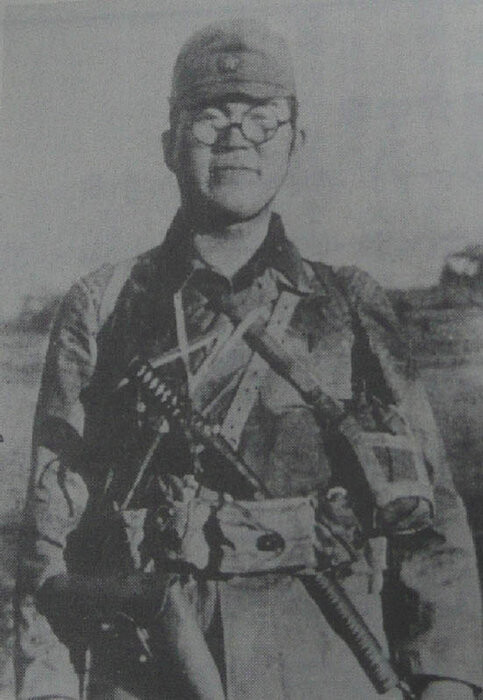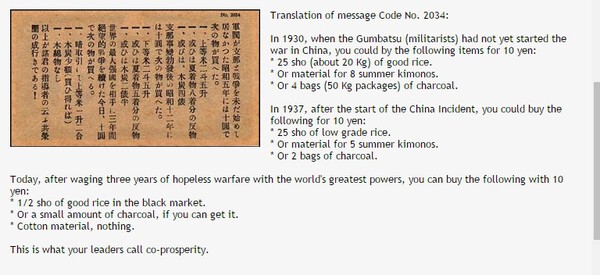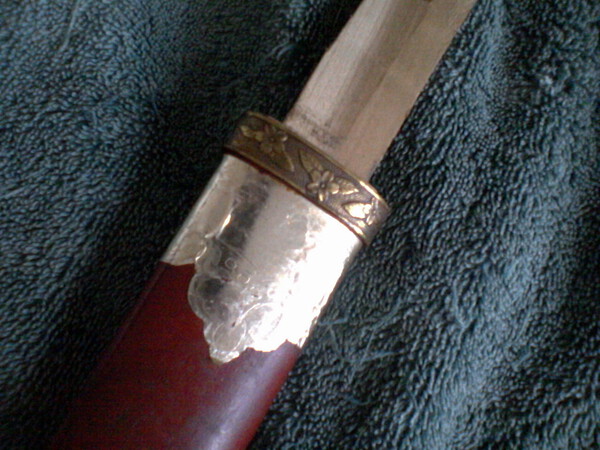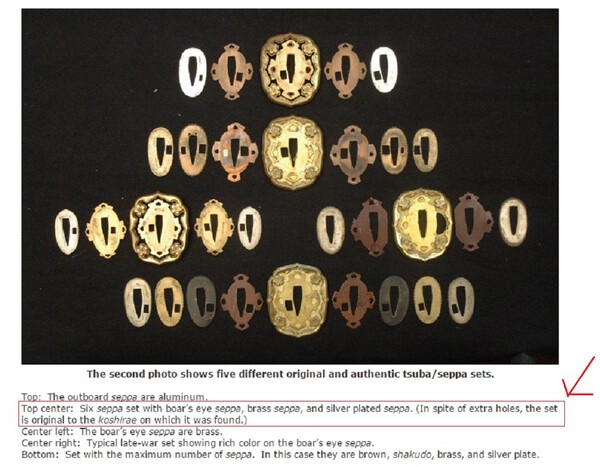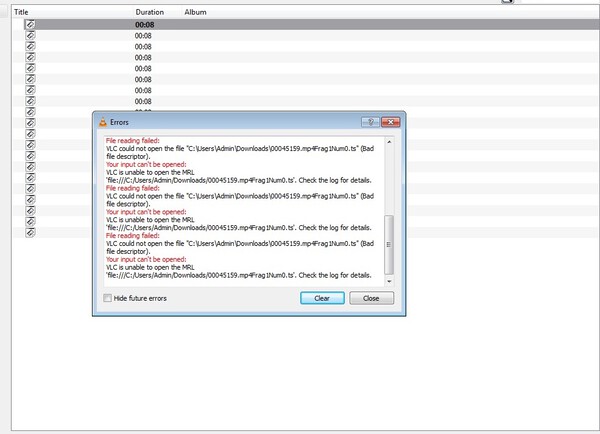-
Posts
1,691 -
Joined
-
Last visited
-
Days Won
11
Content Type
Profiles
Forums
Events
Store
Downloads
Gallery
Everything posted by Dave R
-
And of course Captain Okuyama Michio, as he prepares to launch a suicide raid on a US Airbase on Okinawa.
-
-
Both lacquer and wrap are reminiscent of older style swords, as in the Sengoku Jidai. Practical and hard wearing, so I would guess a special order by someone expecting serious combat use.... or wanting to give that impression anyway.
-
The Sino-Japanese war began in July 1937, the Pacific War in December December 1941. Japan was already suffering shortages and inflation before Pearl Harbour, so I would have no problem believing there was already severe degradation of their kit before the War with the US and Britain. I would have reservations about them using English labelling after that date, not impossible but I would find it odd. An interesting piece I found was a US propaganda bill, printed on the back of a fake ten yen note dropped over Japan in great quantities, where they make the point that the war with China had already severely damaged their economy, and that the war with the US had ruined it.
-
Having some English text on them, my guess is that they were pre war (in the Pacific) in origin and were simply a "made in/by" product label.
-
Not just on wooden saya! Details are hard to see on this one because it is so shiny, but it has a faint embossed pattern and I suspect originally had coloured detail.
-
My double take was seeing a Yari for sale as a 20th Cent. African spear head, and priced accordingly. The cheapest signed blade I ever bought.
-
Officers swords were not issue, they had to pay for their own which is one reason for the re-use of old (Edo) blades. There are a lot of accredited oddities in this field. Without having the piece in hand I would go no further than saying this is not an impossible combination, I am not so bold as to be confident of an appraisal from just a set of photographs.. Regarding the seppa, they are after all just spacers to make a tsuka a nice fit, eg below.
-
Was it just a bare blade or was it mounted?
-
A put together certainly, but when? I have seen some odd assemblages that were wartime legit'.
-

Need Help With Identification Of Sword
Dave R replied to pats22shirley's topic in Military Swords of Japan
It is quite possible that it was taken off a soldier during the war. Sometimes the only militarisation these got was a leather cover on the scabbard and a suspension ring. -
Been there, done that. Now getting back in.
-

Need Help With Identification Of Sword
Dave R replied to pats22shirley's topic in Military Swords of Japan
There are Showato in Buke mounts that were made that way. Part of a patriotic revival of traditional swordsmanship. I would guess whether the blade was traditional or not would depend on money spent. Below is Showa (1930's) Tsuka I have in my collection. -
Not all "stainless" steels are equal. Ohmura San has something to say about this, and I have seen in hand a Kai Gunto in Stainless, with a splendid Hamon, signed by the Smith and the Polisher.
-
I have also heard of them cracking after an apparently successful quench!
-
Does anyone know what style Kaneyoshi constructed his nihonto blades in? We know there are various formats, construction styles that traditional blades were made in...Kobuse, Sam'mai, Hyoshigi and Wari-Hagne etc....Or did they just bang them out in Muku? Is there anything known about the most used forms for Gendai Shin Gunto, and particularly what Kaneyoshi produced? Many thanks for any answers to this one.
-
The question I would ask is "how did it end up in that position"?
-
If you look at Ohmura San's site, he has his own take on Koto v Shinto. That the difference was they made lots of swords and went for a technique where the different grades of steel were mixed "kneaded" rather than separated into laminations or panels.... http://ohmura-study.net/994.html you will find it under the heading titled "the outline of a Japanese sword". A bit like the pattern welded swords of the late iron-early medieval period in Europe.
-
Ohmura San shows one on his site near the bottom of the page. Uncommon though. End of the War all sorts came out of the woodwork. http://ohmura-study.net/753.html
-
I have one very like it, an old blade with a mangled nakago and a "pinched" area near the nakago-jiri. In my case the blade itself is nowhere near as nice, being so worn and tired that it is not worth any sort of polish. What is the habaki like?
-
Spent part of it's life as a Kyu-Gunto?
-
I have seen a few altered mounts retro fitted for shin gunto, mainly iron tuba where the hole for the chuso was just punched through the plate. I wonder if they were seen as superior "ancestral fittings" or just as improvised "can't afford new". I often have the same thought about old blades in Gunto Koshirae.
-
Still no luck playing it! Can someone put up another version or point me to the source? Nope, still getting nothing at 11.57 GMT 3 of Nov.16...... could be the version of VLC I have or my 'puter. According to one message it is a firewall problem. Never mind, as I am more interested in the subject of sword production in the 1940's than my ability to run a particular program, so let's concentrate on that.
-
I think the ties were worn for the occasion. I also think the "Gaffer" came out of his office especially for the cameras. What I particularly noticed was the amount of hand work, gravity/drop hammer and etc rather than rollers or power hammers. The sword in question was a "special" though rather than a production line job.


